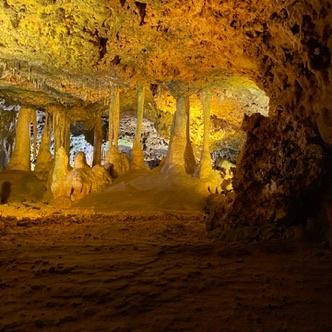How can travelers visit Mallorca's geological sites while minimizing their environmental impact?
Similar Topics
mallorca geological sites
minimize environmental impact
sustainable travel mallorca
serra de tramuntana
cuevas del drach
eco-friendly transport
low-impact tours
conservation awareness
Travelers wishing to explore Mallorca’s geological sites while minimizing environmental impact should adopt thoughtful and sustainable practices throughout their visit. First, it is advisable to stick to established trails and paths to prevent erosion and damage to fragile rock formations and vegetation. Many of Mallorca’s geological wonders, such as the Serra de Tramuntana mountain range or the Cuevas del Drach caves, are within protected areas where guidelines are in place to safeguard the natural environment. Visitors should respect these regulations, avoid picking plants or disturbing wildlife, and refrain from climbing or removing rock specimens, ensuring the landscape remains intact for future generations.
Transport choices also play a significant role in reducing environmental footprints. Opting for public transportation, bicycles, or walking to these sites can greatly reduce carbon emissions compared to using private cars. Mallorca has made efforts to improve its network of eco-friendly transport options, including electric shuttles and bike rental facilities near popular geological locations. Additionally, travelers should carry reusable water bottles and avoid plastic waste, as litter can disrupt the ecosystem and spoil the natural beauty. Supporting local businesses that prioritize sustainability further helps promote an environmentally responsible tourism economy.
When visiting caves or other sensitive geological formations, it is important to follow guidelines regarding lighting, noise, and group sizes. Many tour operators offer low-impact visits designed to minimize disturbance and educate visitors on conservation efforts. By choosing such operators, travelers contribute to raising awareness and funding preservation work. Overall, patience, respect, and a commitment to minimizing footprints will allow visitors to enjoy Mallorca’s unique geology while playing a part in the island’s conservation. Through mindful behavior and conscious choices, travelers can help ensure Mallorca’s geological treasures endure in pristine condition.
Transport choices also play a significant role in reducing environmental footprints. Opting for public transportation, bicycles, or walking to these sites can greatly reduce carbon emissions compared to using private cars. Mallorca has made efforts to improve its network of eco-friendly transport options, including electric shuttles and bike rental facilities near popular geological locations. Additionally, travelers should carry reusable water bottles and avoid plastic waste, as litter can disrupt the ecosystem and spoil the natural beauty. Supporting local businesses that prioritize sustainability further helps promote an environmentally responsible tourism economy.
When visiting caves or other sensitive geological formations, it is important to follow guidelines regarding lighting, noise, and group sizes. Many tour operators offer low-impact visits designed to minimize disturbance and educate visitors on conservation efforts. By choosing such operators, travelers contribute to raising awareness and funding preservation work. Overall, patience, respect, and a commitment to minimizing footprints will allow visitors to enjoy Mallorca’s unique geology while playing a part in the island’s conservation. Through mindful behavior and conscious choices, travelers can help ensure Mallorca’s geological treasures endure in pristine condition.
🧩 Related Questions
Related Question
What emergency resources are available to hikers in Mallorca’s mountainous areas?
Related Question
What impact does tourism have on the preservation and promotion of Catalan in Mallorca?
Related Question
Are there any family-friendly gardening activities or workshops available during Mallorca’s flower festivals?
